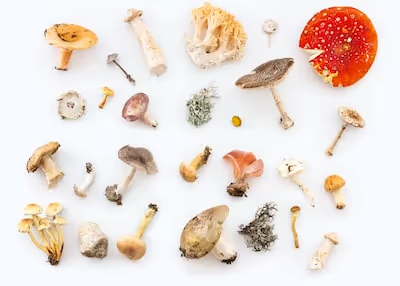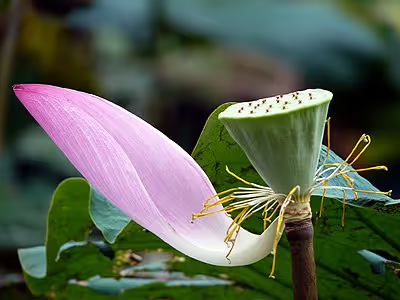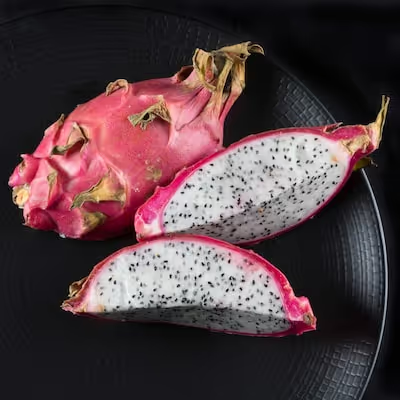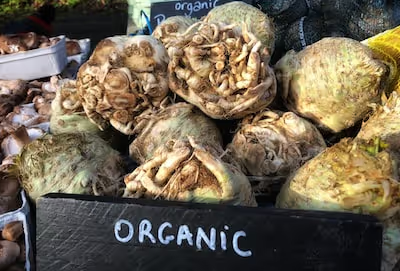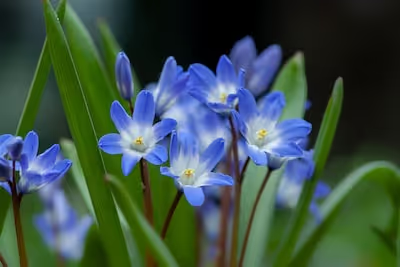Growing Jicama: How to Plant and Harvest Crisp, Healthy Roots
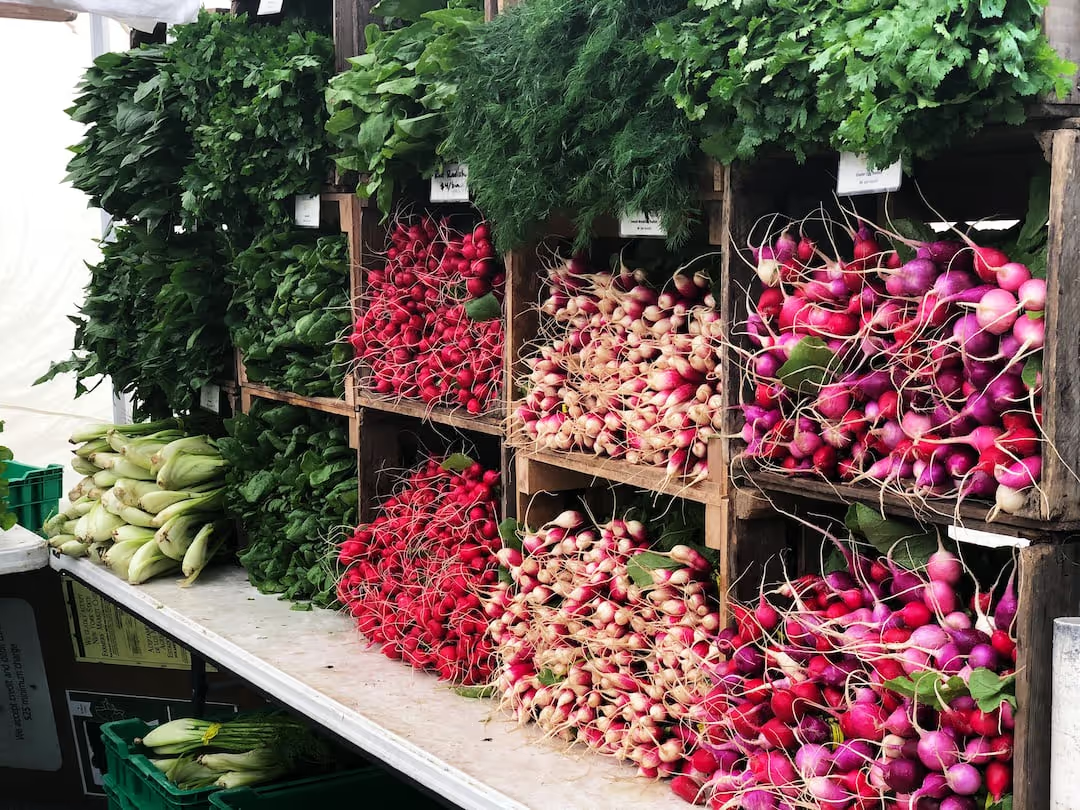
Growing Jicama
Growing jicama brings crisp texture and sweet crunch straight to your backyard garden. Plant jicama seeds in warm, fertile soil after the last frost, water consistently, and give these sun-loving vines room to climb. With a little patience—around five months—you'll harvest juicy, flavor-packed tubers perfect for fresh salsas and salads. Curious about cultivating your own exotic culinary treasure? Read on for the full scoop on growing jicama.
Cheatsheet: Plant, Grow, and Pick Perfect Jicama
🌱 Prep & Plant
- Start early: Jicama needs 5–9 frost-free months.
- Full sun: 6+ hrs direct light daily.
- Soil: Loose, sandy, rich in compost (pH 6.0–7.5).
- Temp: 70–90°F (21–32°C).
- Sow seeds: Direct after frost. Soak 24h, 1 in (2.5 cm) deep, 12 in (30 cm) apart.
- Water: Keep soil evenly moist, not soggy.
Jicama seeds, compost, mulch
🌿 Grow Healthy Jicama
- Mulch: Keep roots cool, suppress weeds.
- Fertilize: Slow-release balanced fertilizer monthly.
- Support: Long vines – use trellis or let sprawl.
- Remove flowers: Pinch off for bigger roots.
- Pests: Watch for aphids, snails.
- Note: Leaves, pods, seeds are toxic.
🍽️ Nutrition & Self-Sufficiency
- Low-calorie: 35 cal/100g, rich in fiber and vitamin C.
- Eat raw: Crunchy in salads & slaws.
- Boost gut health: Prebiotic inulin fiber.
⏳ Harvest & Store
- Harvest time: 5–9 months after sowing, before frost.
- Signs: Vines yellow, pods form but roots still firm.
- Lift roots: Use fork, lift gently; avoid damage.
- Storage: Cool, dry room, 2–3 weeks.
🛠️ Tools and Products You'll Need
- Sturdy garden fork
- Spade
- Hand trowel
- Trellis or plant ties
- Drip irrigation or watering can
- Mulch
- Gloves (roots can cause mild skin irritation)
Soak & sow seeds – Soak seeds 24 hours, sow after frost in warm, fertile soil.
Maintain moisture & mulch – Water regularly, mulch to lock in moisture.
Fertilize & train vines – Feed monthly, guide vines with trellis.
Remove flowers – Pinch early blooms for bigger, tastier roots.
Harvest roots before frost – Uproot once vines yellow and roots have sized up.
-
Growing Jicama: site, season, and timing
Growing Jicama starts with climate math: it needs a long, hot, frost-free window of roughly 150 to 200 days. I set starts out after soil warms solidly above 70 F (21 C) and the 10-day forecast looks kind.
Jicama is Pachyrhizus erosus, a tropical legume grown for its crisp, sweet root. The vines shrug off heat but collapse at the first brush of frost.
Daylength and flowering
Short days trigger flowering, while long days push vines and root sizing. I avoid letting plants set pods because energy leaves the root and the seeds are poisonous.
If your fall days shorten quickly, you’ll often see buds late season. Pinch them.
Seed prep and sowing
The seed coat runs tough, so I nick the edge with a nail clipper and soak 12 to 24 hours in warm water. This simple scarification cuts germination time dramatically.
Direct sow 1 inch deep (2.5 cm), 12 to 18 inches apart (30 to 45 cm), in rows 3 to 4 feet apart (0.9 to 1.2 m). In cool-summer regions, start in 4-inch (10 cm) pots 4 to 6 weeks before last frost and transplant gently.
Target soil temperature at planting: 75 to 90 F (24 to 32 C). You’re aiming for 150 to 200 frost-free days for market-sized roots. Source: Purdue NewCROP; Texas A&M AgriLife Extension.
Soil, fertility, and inoculation
Loose loam with steady moisture yields crisp, hefty roots; heavy clay bakes rugby balls. I work in 2 to 3 inches (5 to 7.5 cm) of compost and a low-nitrogen organic blend like 5-10-10 at planting.
As a legume, jicama can fix nitrogen if the right rhizobia are present. I dust seed with a bean/pea inoculant to jumpstart nodulation.
pH and drainage
Target pH 6.0 to 7.5 with drainage that sheds water within an hour after a soak. Waterlogged beds invite rot and spindly roots.
Trellising and training
Vines can run 10 to 20 feet (3 to 6 m), so give them a cattle panel or string trellis. I prune lightly to one or two strong leaders and keep the canopy airy.
Untrained sprawl still yields, but trellising concentrates light, saves space, and makes irrigation and weeding simple.
Irrigation and mulch
Even moisture is the texture secret. Let the bed dry out and the flesh turns woody and hollow; overwater and it swells bland.
I drip irrigate twice weekly in heat, then mulch 2 inches (5 cm) deep with clean straw to keep soil around 65 to 75 F (18 to 24 C).
Varieties and sourcing
Most home growers will see seed labeled simply as jicama or yam bean, often the Puerto Rican type of P. erosus. Look for long-season descriptions and high root dry-matter notes from reputable seed houses with germ tests.
I buy fresh seed every two years since old jicama seed loses vigor. Expect packets in the 50 to 200 seed range.
Containers
It can work in a 15 to 25 gallon (57 to 95 L) deep container, but yields run smaller. Use a coarse, well-drained mix with added compost and a slow-release, low-N feed at label rate.
Position in full sun and trellis off the pot to prevent tipping. Water discipline matters even more in containers.
Companions and spacing strategy
I interplant with basil, onions, and short-season greens that finish before vines hit stride. Avoid shading from corn or sunflowers that steal light during the root-bulking phase.
Keep a clean 12-inch (30 cm) collar around each crown. Air and light down low translate into thicker necks and smoother skins.
Pests and diseases
Aphids, spider mites, and whiteflies show up in heat. I control them with hard water sprays, horticultural soap, and lady beetles when available.
Root rots emerge in tight, wet soils. Rotate away from other legumes for 3 years and skip overhead watering during warm nights.
Safety
Eat the root only. Leaves, flowers, pods, and seeds contain rotenone compounds that are hazardous if ingested (Purdue NewCROP; University of Hawai‘i CTAHR).
Teach kids and guests that the pretty vines are off-limits for snacking. No exceptions.
Feeding schedule
Too much nitrogen grows a jungle and stunts roots. I side-dress once at 60 days with a 2-6-4 or similar, then leave it alone.
If foliage pales midsummer, I foliar spray kelp and fish at low strength in the evening. It perks leaves without spiking N in the soil.
Harvest cues
I start checking at 140 days by scraping soil near the crown with fingers. Mature roots feel firm, with a smooth tan skin and a neck as thick as my thumb.
Frost in the forecast means go-time. Cut vines, fork wide, and lift gently to avoid bruises.
Curing and storage
Air-dry roots in shade for 2 to 3 days, then store at 55 to 60 F (13 to 16 C) with moderate humidity. Cold refrigerators dull flavor and cause chilling injury.
Under those conditions I hold quality for 4 to 8 weeks. Damaged roots go first into slaws and quick pickles.
USDA FoodData Central lists raw jicama at about 38 kcal per 100 g and roughly 20 mg vitamin C, with significant inulin-type fiber. That combo explains the crisp snap and mild sweetness.
Flavor and kitchen notes
The taste lands between apple, water chestnut, and a pear that learned restraint. I slice it into lime-salt salads, tuck sticks into tacos, and quick-pickle coins for bánh mì.
Cooked, it keeps crunch in stir-fries better than many roots. Overcook and it turns watery.
Troubleshooting quick hits
- All vine, tiny roots: cut nitrogen, thin plants, and pinch flowers.
- Hollow centers: irregular watering or a hard dry spell; switch to steady drip.
- Cracked skins: big swings in soil moisture; mulch and water evenly.
- Root rot smell: heavy soil or overwatering; raise beds and lighten texture.
- Yellowing leaves with sticky residue: aphids; wash and treat early.
Yield expectations
In warm climates with long seasons, I average 2 to 5 pounds (0.9 to 2.3 kg) per plant. Cool summers trim that in half.
One well-grown bed, 20 plants, supplies a family and friends with plenty for fresh eating and pickles.
Season extension
Black plastic or woven landscape fabric warms spring soil by 3 to 6 F (1.5 to 3 C). Low tunnels with clear film in shoulder months add precious heat units.
Pull covers during hot spells to prevent leaf scorch. Vent early and often.
Buying guide: what actually helps
- Fresh jicama seed from a reputable supplier with recent germ tests.
- Bean/pea inoculant compatible with warm-season legumes.
- Sturdy trellis: cattle panel, T-posts, or a vertical string grid.
- Drip line with 0.5 gph emitters and a simple timer.
- Soil thermometer and a hand fork with a broad, gentle lift.
Alternatives with a similar crunch
- Yacon (Smallanthus sonchifolius): sweet, juicy roots; likes cool nights; stores well.
- Daikon radish: quicker at 45 to 70 days; spicier; fall crop shines.
- Kohlrabi: bulbous stem, mild crunch; far shorter season.
- Water chestnut (Eleocharis dulcis): grown in tubs of water; sensational snap, different setup.
Anecdotal field notes
The year I mulched late, my roots came out stringy like a chewed cigar. I fixed it the next season by laying straw right after first cultivation and never looked back.
I also learned to stop babying vines with nitrogen after 60 days. The switch flipped my roots from baseballs to grapefruits.
Key numbers at a glance
- Frost-free days: 150 to 200.
- Soil temp for sowing: 75 to 90 F (24 to 32 C).
- Soil pH: 6.0 to 7.5.
- Spacing: 12 to 18 inches (30 to 45 cm) in-row; 3 to 4 feet (0.9 to 1.2 m) between rows.
- Storage: 55 to 60 F (13 to 16 C), 4 to 8 weeks.
References and further reading
Purdue University NewCROP: Pachyrhizus erosus crop profile, with notes on toxicity, season length, and culture. It provides agronomic baselines that match field experience.
Texas A&M AgriLife Extension: vegetable production notes for warm-season legumes, including planting windows and soil temps. Reliable and regionally tested.
University of Hawai‘i CTAHR: yam bean fact sheets covering tropical management and safety. Useful for short-day flowering behavior.
USDA FoodData Central: nutrient data for raw jicama. Clear numbers for calories, vitamin C, and fiber type.
Frequently Asked Questions About Growing Jicama
What type of soil provides optimal conditions for jicama plants?
Jicama plants flourish in well-draining, fertile soil rich in organic matter. Work compost into sandy or loamy soils before planting to encourage healthy tuber development. Maintain soil pH between 6.0 and 7.0 for ideal nutrient absorption.
How much sunlight do jicama plants require?
To thrive, jicama prefers full sun exposure, typically receiving between 6 to 8 hours of direct sunlight per day. Choose a garden area with consistent sunlight throughout the growing season to ensure best results.
What watering schedule supports healthy jicama growth?
Regular watering promotes steady growth, especially in warmer climates. Aim to provide around 1 to 2 inches (2.5 to 5 cm) of water per week. Avoid waterlogged conditions by ensuring proper drainage, as overly wet soils can lead to root rot.
What is the best planting season and method for jicama?
Plant jicama seeds after the danger of frost passes and soil warms consistently above 60°F (15°C). Sow seeds directly into prepared garden beds, spacing plants approximately 8 to 10 inches (20 to 25 cm) apart with rows about 3 feet (90 cm) apart.
How long does it take for jicama to mature for harvest?
Jicama plants mature approximately 120 to 150 days after planting. Harvest tubers when they reach about 4 to 6 inches (10 to 15 cm) in diameter, carefully digging to avoid damaging their delicate skin.
Can jicama plants withstand frost or cold weather?
Being tropical, jicama plants cannot tolerate frost or prolonged cold conditions. Optimal growth occurs where temperatures consistently remain above 50°F (10°C). Protect plants with covers or transplant to sheltered spots if unexpected cold weather arrives.
Do jicama plants require additional support structures?
Yes, jicama vines benefit from vertical support such as trellises or stakes. Providing structure for climbing helps manage growth, encourages airflow, and simplifies harvesting.
Growing Jicama rewards patience and a bit of dirt under your fingernails. Start with warm soil, plenty of sunshine, and well-drained beds. Give the vines room to sprawl—jicama likes to stretch out and take its time. Water deep, but don’t drown your roots. Hold off the harvest until the leaves begin to yellow and the pods dry; that’s when the roots hit peak crispness. Remember, the magic lies beneath the surface—roots are the prize, not the pods or leaves. If you’re hooked on root crops, you might also get a kick out of growing rutabaga for a different kind of earthy crunch. In the end, growing jicama is about patience, a touch of grit, and the joy of unearthing something fresh and honest from your own patch of ground.
The Homesteader's Advantage: Jicama for Self-Sufficient Living
Yield Efficiency and Storage Benefits
- High Yield: Each jicama vine produces 4-5 tubers, averaging 3-5 lbs (1.3-2.2 kg) each per plant, maximizing limited garden space.
- Extended Storage: Store harvested jicama in dark, dry root cellars at 53-60°F (12-16°C) and high humidity—lasts up to three months without refrigeration.
Nutritional Advantages for Self-Reliance
- Caloric Density: Provides 38 calories per 100 grams (3.5 oz), ideal for long-term sustenance.
- Nutrient Profile: Rich in vitamin C, fiber, and potassium—supports immune response and digestive health, enhancing dietary self-sufficiency.
Sustainable Regrowth and Propagation
- Seed Collection: Fruiting pods yield viable seeds—harvest mature, dry pods to propagate future crops, reducing ongoing seed expenses.
- Soil Regeneration: Jicama roots fix nitrogen, improving soil fertility naturally for companion planting with corn, cucumbers, or tomatoes.
Homestead Livestock Integration
- Foliage Feed Use: Leaves and stems serve as nutritious, protein-rich animal fodder for goats and rabbits, enhancing homestead feed autonomy.
- Waste Reduction: Overgrown or damaged tubers convert efficiently into nutritious poultry supplements.
Find out which plants will thrive in your garden!
Answer a few fun questions and get custom plant recommendations perfect for your space. Let’s grow something amazing together!

start your season
